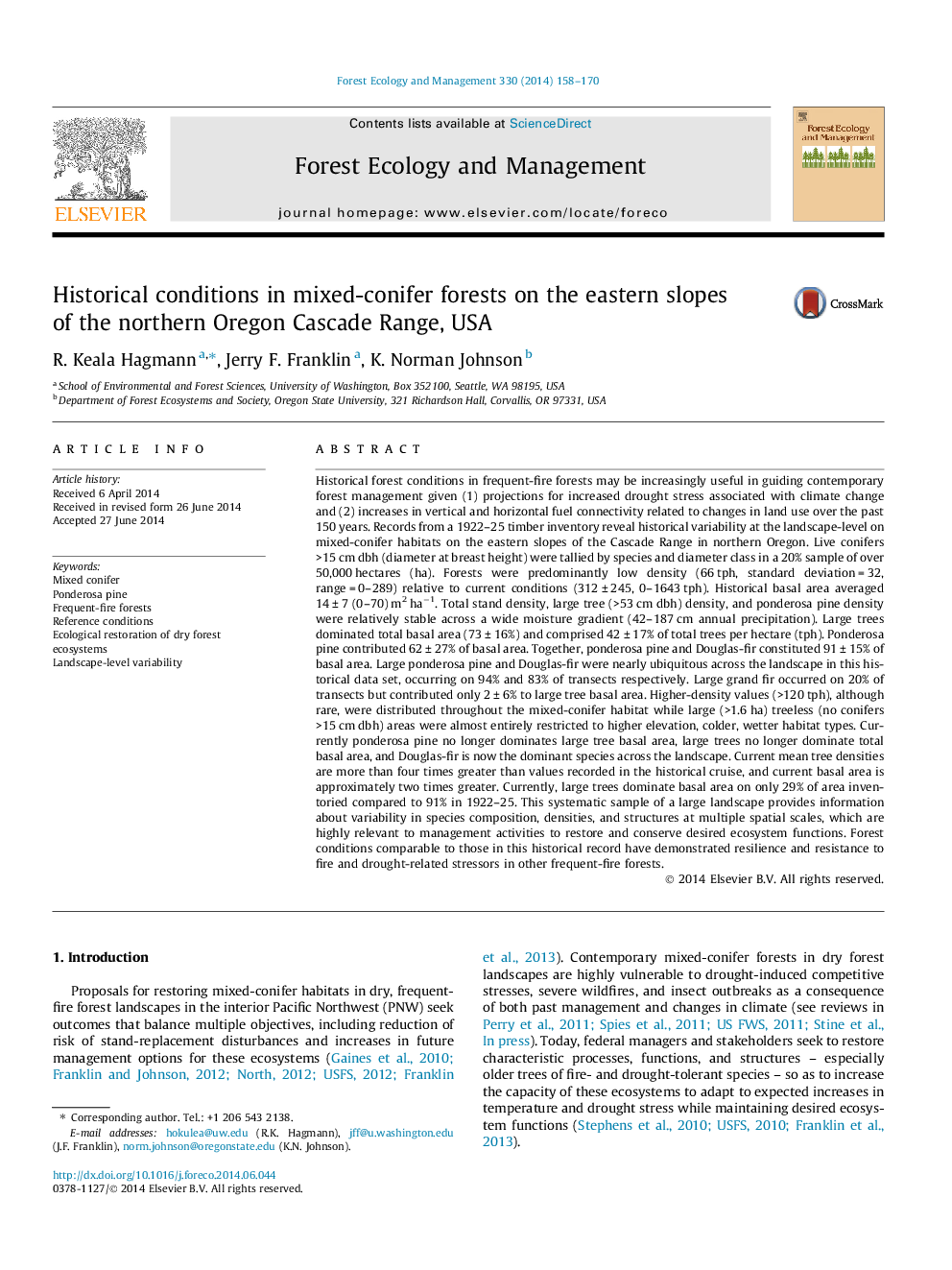| Article ID | Journal | Published Year | Pages | File Type |
|---|---|---|---|---|
| 6543339 | Forest Ecology and Management | 2014 | 13 Pages |
Abstract
Historical forest conditions in frequent-fire forests may be increasingly useful in guiding contemporary forest management given (1) projections for increased drought stress associated with climate change and (2) increases in vertical and horizontal fuel connectivity related to changes in land use over the past 150 years. Records from a 1922-25 timber inventory reveal historical variability at the landscape-level on mixed-conifer habitats on the eastern slopes of the Cascade Range in northern Oregon. Live conifers >15 cm dbh (diameter at breast height) were tallied by species and diameter class in a 20% sample of over 50,000 hectares (ha). Forests were predominantly low density (66 tph, standard deviation = 32, range = 0-289) relative to current conditions (312 ± 245, 0-1643 tph). Historical basal area averaged 14 ± 7 (0-70) m2 haâ1. Total stand density, large tree (>53 cm dbh) density, and ponderosa pine density were relatively stable across a wide moisture gradient (42-187 cm annual precipitation). Large trees dominated total basal area (73 ± 16%) and comprised 42 ± 17% of total trees per hectare (tph). Ponderosa pine contributed 62 ± 27% of basal area. Together, ponderosa pine and Douglas-fir constituted 91 ± 15% of basal area. Large ponderosa pine and Douglas-fir were nearly ubiquitous across the landscape in this historical data set, occurring on 94% and 83% of transects respectively. Large grand fir occurred on 20% of transects but contributed only 2 ± 6% to large tree basal area. Higher-density values (>120 tph), although rare, were distributed throughout the mixed-conifer habitat while large (>1.6 ha) treeless (no conifers >15 cm dbh) areas were almost entirely restricted to higher elevation, colder, wetter habitat types. Currently ponderosa pine no longer dominates large tree basal area, large trees no longer dominate total basal area, and Douglas-fir is now the dominant species across the landscape. Current mean tree densities are more than four times greater than values recorded in the historical cruise, and current basal area is approximately two times greater. Currently, large trees dominate basal area on only 29% of area inventoried compared to 91% in 1922-25. This systematic sample of a large landscape provides information about variability in species composition, densities, and structures at multiple spatial scales, which are highly relevant to management activities to restore and conserve desired ecosystem functions. Forest conditions comparable to those in this historical record have demonstrated resilience and resistance to fire and drought-related stressors in other frequent-fire forests.
Related Topics
Life Sciences
Agricultural and Biological Sciences
Ecology, Evolution, Behavior and Systematics
Authors
R. Keala Hagmann, Jerry F. Franklin, K. Norman Johnson,
